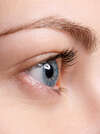Operation Voies Lacrymales in Nïmes
Tear ducts specialty
Do you often suffer from conjunctivitis and styes, and notice that your eyes sometimes water?
These signs may indicate an obstructed lacrimal duct, i.e. the tear duct leading to the nostril tends to become blocked. It then gradually becomes necessary to perform a lavage with a cannula for several reasons: to push out a mucus plug, to check the effectiveness of a lavage by passing the lavage fluid through the nose, and to diagnose whether the tear duct is clear.
If the lavage is effective, a prescription will prevent you from having to re-clog your tear ducts in the future.
If lavage fails to unblock your tear ducts, antibiotic eye drops will be tried. In the event of further failure, a CT scan of the tear ducts will be performed to determine whether there is any deformity, compression or malformation blocking the tear duct.
In the event of failure 1 week after medical treatment, surgery under general anaesthetic may be decided.

What conditions must be met to justify an intervention on the tear ducts?
- watery eyes that interfere with activity
- Stage 1 is simply functional discomfort,
- This is followed by stage 2, causing recurrent infections.
- Then comes stage 3, with its trail of "minor" infections.
- and finally stage 4, a sufficient condition to justify surgery.
Frequently asked questions
Are the lacrimal passages responsible for styes or conjunctivitis?
Poor drainage to the nose causes tears to stagnate in the eye. Microbes are no longer carried into the nose and can infect the 200 glands at the edge of the eyelids, causing styes, chalazia and recurrent conjunctivitis.
Why wash your lacrimal passages?
The serum introduced into the lacrimal point at the inner corner of the eyelids is used to push the thick, sometimes purulent secretions into the nose to be blown out.
Is it painful to wash?
On a scale of 0 to 10, the discomfort caused is rated between 2 and 3, and some patients return every year to avoid a complication.
Can dacryo-cysto-rhino-stomy surgery be avoided?
Yes, if cleansing is effective and there is no tear duct malformation requiring surgery.
Is a dacryo-cysto-rhino-stomy always performed under general anesthesia?
A general anaesthetic is almost always required for patient comfort.
My baby has recurrent conjunctivitis. Do I need to do a catheterization?
Catheterization under local anaesthetic is a fast, effective procedure.
If not, the incovenient of recurrent conjunctivitis is important, with prescription of local and general antibiotics by mouth if an abscess forms.
Failure of local antibiotic treatment requires catheterization.